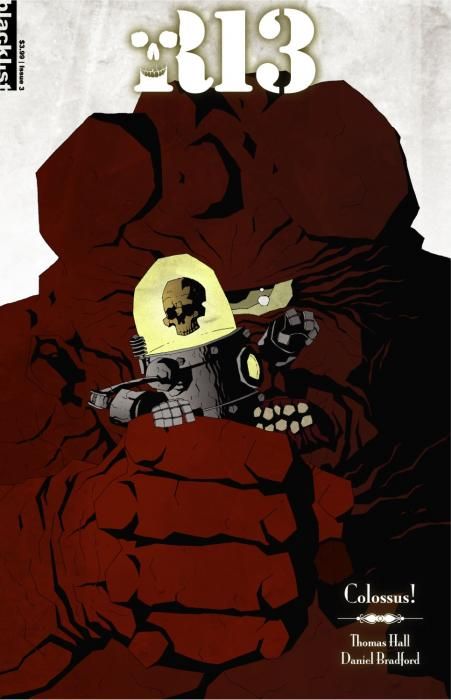"Robot 13" is a strange series, and I mean that in a good way. From the very beginning, its Mike Mignola influence shone through. Chiseled stone, monsters, bleak landscapes, and lots and lots of black ink give this series a visual connection to "Hellboy" that's inescapable. But it also has an Eduardo Risso or Alberto Dose influence as well -- though with wider vistas and larger panels. And some of the characters have an underlying Jeff Lemire feel, if not in their appearance, then in their simplicity. After three issues, it's safe to say that this isn't a verbose series.
But this issue has the most story of all three, and it's the most satisfying issue to date. If issue #1 was about rip roarin' sea monster action, and issue #2 was about rip roarin' phoenix fights with a bit of unexpected backstory, then issue #3 is about rip roarin' Cyclops fisticuffs with even more explicit information about the creature called Robot 13.
Here's what we know so far -- and much of the information comes from this very issue, after two issues of oblique references and elliptical storytelling: The skull-in-a-jar atop the robot body, a.k.a. Robot 13, is either Talos, the ancient metal man of myth, or he's somehow a revamped version of that character. The giant red Cyclops who shows up seems to think he's Talos, yelling "Man of Bronze" at him, as he scoops him up from inside the house in which he's recovering. Robot 13 doesn't seem to know what's going on either -- he has fragments of memory of a scientist working to reconstruct his body, and he can't seem to make sense out of this 20th century world in which he now lives.
Plus, you know, he's a dude with a skull head in a jar. And he has spindly little robot arms and legs.
But that doesn't stop him from slicing and dicing everything that comes across his path -- assuming that they are some kind of legendary monster. He's pretty good with humans. His people skills may be limited, but he has a sweetness about him.
The pleasure of this series is in the madcap action sequences, which, unlike Mignola's, have a violent slapstick quality to them, a Tex Avery vibe. But as this series develops, it's more and more apparent that there's a real history to this character. He's not just an excuse to throw together a bunch of fight scenes. Okay, maybe he is, but he's a good excuse, what with his mythological heritage and uncertain treks through time.
This series still has a rawness to it that's charming, but it also has a deeper structure than the first issue would have led you to believe. Thomas Hall and Daniel Bradford are making a mark in the comic book world with this series, one issue at a time. It's a good-looking one.

